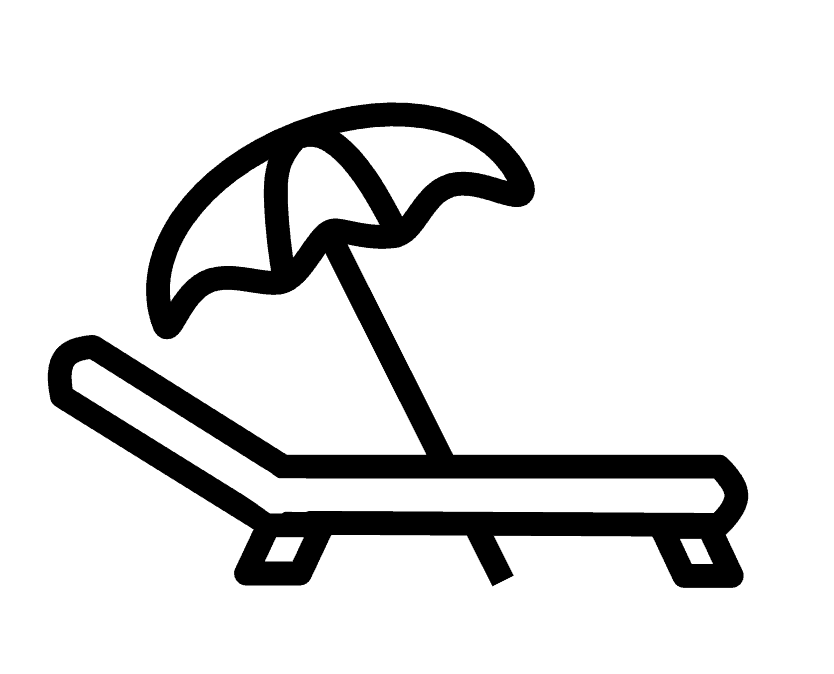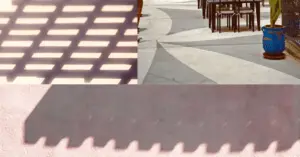Whether its for entertaining or just relaxing with family, when you are looking to enjoy your outside space you dont always want to be out in the heat of the sun. When deciding between the different options, here are the most popular ideas and their key benefits and differences to help you make the most of your patio or deck space.
Parasol / Patio Umbrella
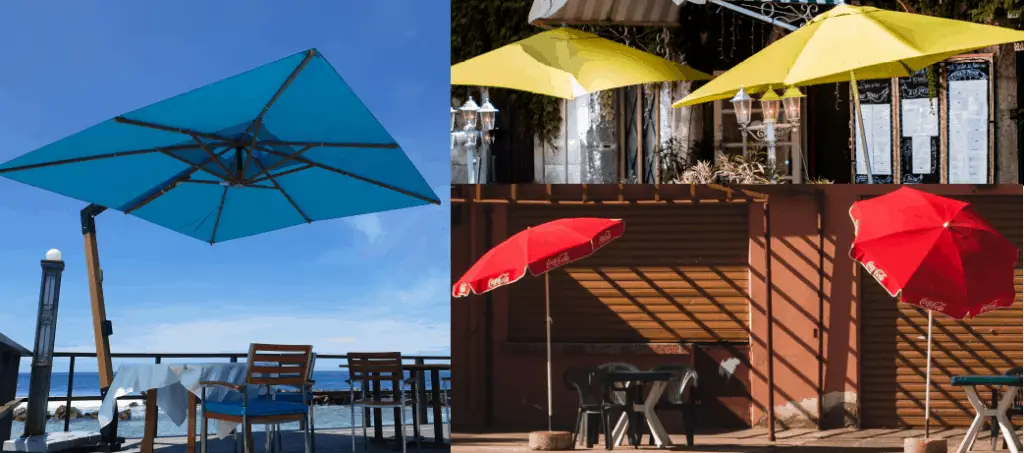
What is a Parasol / Patio Umbrella?
These are collapsible umbrellas usually mounted in a base or stand with a primary use of giving shade from the sun. In most cases, the fabrics used mean they can also offer some protection in the rain, even if not specifically waterproof but they are susceptible to blowing over in the wind. As the size and height increases then the size and weight of the bases also needs to increase so their ultimate size is limited.
These are the basic starting point of outside shade but with the new innovations, they can be anything but basic. They can now come in various designs including tilting and cantilevered (where the support post and base are off to one side of the umbrella) as well as those with a cranking handle to hoist and open the umbrella mechanism. They are available in a large range of shapes and sizes from the small individual round ones to gigantic rectangular ones.
Pro's - Parasol | |
Price: |
|
Flexibility: |
|
Installation |
|
Con's - Parasol / Patio Shade | |
Price: |
|
Shade: |
|
Installation: |
|
Note: Some of the larger commercial-style parasol’s used outside of restaurants may require permanent fixings.
Sun Shade / Shade Sail
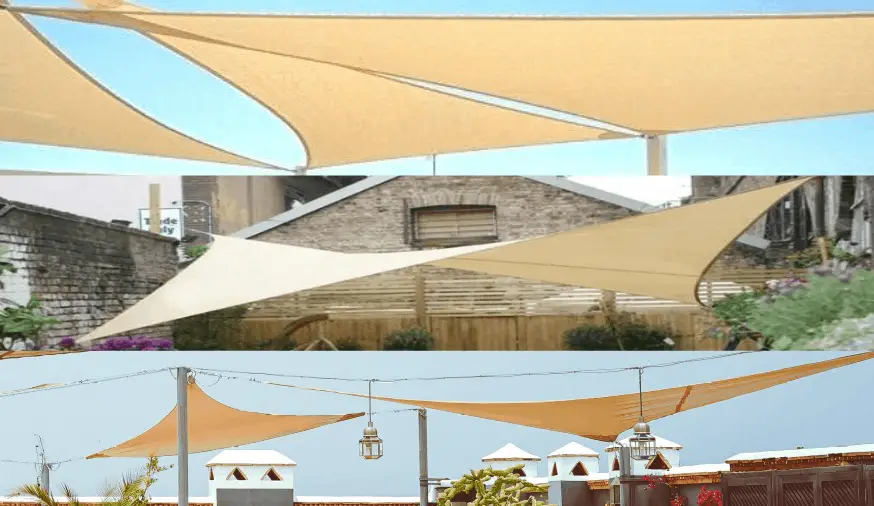
What is a sun shade / shade sail?
These are fabrics that are suspended between buildings and/or posts and are usually highly tensioned so they can withstand relatively strong winds. Most commonly they are made of a mesh material that allows water to drain through it but still offers a high degree of UV protection(85-98%).
These can be a simple addition to cover a patio area but there are a number of considerations when planning to install one. (See our Guide; Planning for a Sun Shade) They can offer a large shaded area that feels open and airy and, when installed well, can be left up in most weathers (even upto ~75mph). It is also possible to get quite creative with your chosen design where including dramatic changes in height is not just for appearances but recommended as part of installing the shade. They are available in a number of ready-made standard sizes but can also be custom ordered online for you to install as well as by specialist service providers.
Pro's - Sun Shade / Shade Sail | |
Price: |
|
Shade: |
|
Installation: |
|
Con's - Sun Shade / Shade Sail | |
Flexibility: |
|
Installation |
|
Retractable Awning
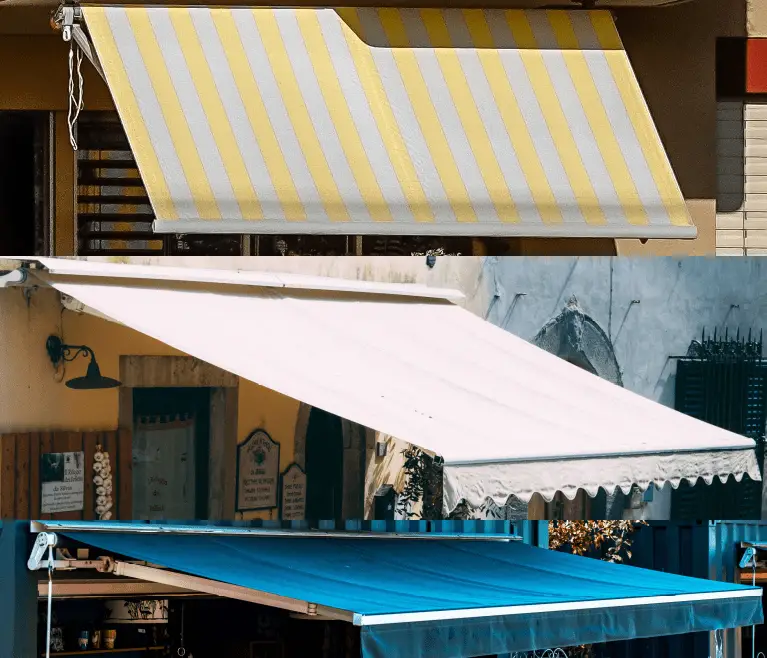
What is a Retractable Awning?
These are rectangular shades that are able to roll up inside a long housing that is mounted to a strong external wall; they can come in a variety of lengths. When unrolling the awning, two aluminimum arms attached to the outer edge of the shade support the material and hold it in place up in the air. The maximum projection (distance shade extends away from the wall) is usually ~10ft / 3m but some manufacturers can go much further (upto 35ft/9m). The shades can come in a variety of colours and can be operated either manually or with an electric motor. These shades are susceptible to strong winds but when rolled away are usually weather tight and can look very tidy.
Pro's - Retractable Awning | |
Price: |
|
Flexibility: |
|
Installation |
|
Con's - Retractable Awning | |
Price: |
|
Shade: |
|
Flexibility: |
|
Installation: |
|
Pergola
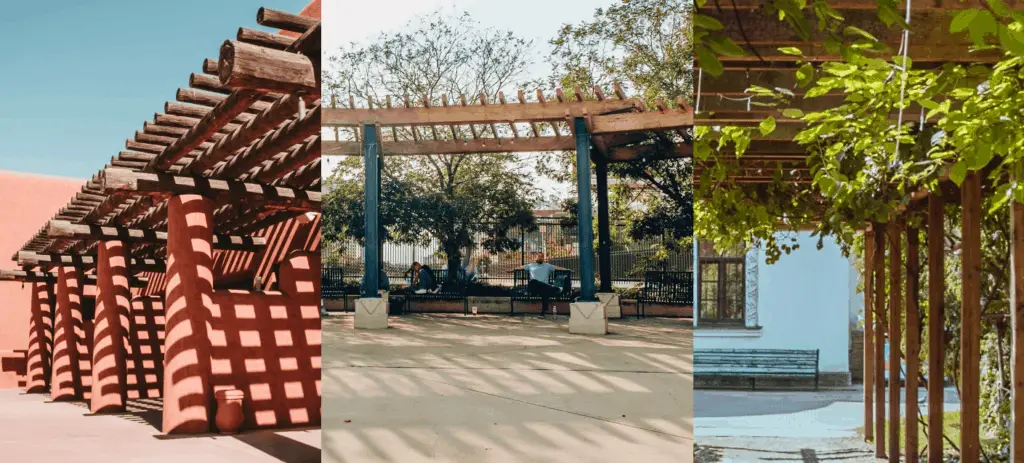
What is a Pergola?
This is a structure that has posts supporting a grid of crossbeams or lattice. It can be free-standing or attached to a building and ordinarily has no real roof. They DO, however, offer shade from the shadows of the posts and the crossbeams. If the cross beams are planks resting on their thin edge then this can be significant when the sun is anything but overhead. This can then be enhanced by having climbing plants growing across the lattice or by adding shade cloth or other materials on top of the lattice to increase its shade protection. Check out our How to Attach Shade Cloth to a Pergola.
The reasons these are so popular are the aesthetic benefits and that they can be made to any shape. The structural requirements are relatively low as it is not necessarily load-bearing (Note: do consider if you may wish to add a patio swing or hammock in the future) and they are also able to withstand all weathers without any particular concerns.
Pro's - Pergola | |
Price: |
|
Flexibility: |
|
Installation |
|
Con's - Pergola | |
Price: |
|
Shade: |
|
Installation |
|
